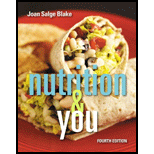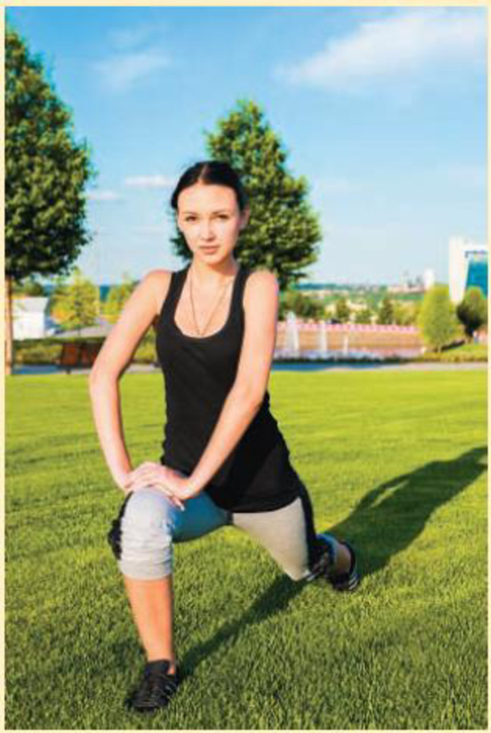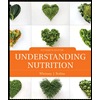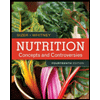
A CASE STUDY
What Is the Female Athlete Triad?
health CONNECTION
Katie Sutton tried out for her school’s dance program at a healthy weight of 130 pounds on her 5’5” frame. The instructors in the dance program suggested that Katie could improve her endurance if she was leaner. Over the next month, Katie added several hours a day of additional exercise to her current dance schedule, while following a very low-calorie diet. By the end of the semester, Katie’s weight had dropped to 105 pounds. Katie’s low-calorie diet and excessive exercise resulted in a stress fracture in her foot that prevented her from performing in the final dance performance of the semester.
The low-calorie diet that Katie followed is one part of the female athlete triad, a syndrome of interrelated conditions existing on a continuum of severity: low energy availability, menstrual dysfunction, and low bone mineral density. Female athletes are often pressured to reach or maintain an unrealistically low body weight and/or level of body fat. This pressure contributes to the development of disordered eating, which helps to initiate the triad. Of major concern with this disorder is that it not only reduces the performance of the athlete, but may have serious medical and psychological consequences later in life.
Components of the Female Athlete Triad
Let’s look at the major components of the triad in a bit more detail.
Low Energy Availability/Disordered Eating
Athletes wishing to lose weight or maintain a low body weight may restrict their energy intake or develop abnormal eating behaviors. At the most extreme, an athlete with disordered eating may fulfill the diagnostic criteria for anorexia nervosa or bulimia nervosa. However, disordered eating occurs on a continuum and is not always so pronounced. Many athletes mistakenly believe that losing weight by any method enhances performance, and that disordered eating is harmless. Disordered eating is most common among athletes in sports where appearance is important, such as figure skating, gymnastics, and ballet, but can occur in athletes in all types of sports. It is also possible for athletes who do not exhibit disordered eating patterns to unintentionally take in fewer calories than they need, such as in Katie’s case. They may appear to be eating a healthy diet—one that would be adequate for a sedentary individual—but their caloric needs are higher due to their level of physical activity.
Menstrual Dysfunction/Amenorrhea
The failure to consume enough energy to compensate for the “energy cost” of the exercise can lead to disruption of the menstrual cycle. At its most extreme and recognizable, this results in amenorrhea, the absence of three or more consecutive menstrual cycles. In Katie’s case, she started to notice irregularities in her period as the semester progressed, but she didn’t know it could be a symptom of a larger problem. Unfortunately, many females welcome the convenience of not menstruating and do not report it.
Low Bone Mineral Density/Osteoporosis
Energy deficiency and decreased estrogen levels due to menstrual dysfunction contribute to bone loss and low bone mineral density. At its most extreme this causes premature osteoporosis, putting the athlete at risk for stress fractures, hip and vertebral fractures, and the loss of bone mass, which may be irreplaceable. Katie’s low-calorie diet, excessive exercise, and menstrual disruption created the conditions that led to the stress fracture in her foot.
Signs and Treatment
All individuals, including friends, teachers, and coaches, involved with female athletes should be aware of the warning signs because the triad components are very often not recognized, not reported, or denied. Warning signs include menstrual changes, weight changes, disordered eating patterns, cardiac arrhythmia, depression, or stress fractures. Those working with athletes should provide a training environment in which athletes are not pressured to lose weight, and should be able to recommend appropriate nutritional, medical, and/or psychological resources if needed. Treatment of an athlete with this disorder is multidisciplinary, and needs to involve cooperation among the athlete’s physician, dietitian, psychologist, coach or trainer, family, and friends.
In Katie’s situation, the symptoms were caught too late and she missed out on the most important performance of the season. However, Katie’s physician recognized the components of the female athlete triad and referred her to a registered dietitian. Katie was able to meet with the registered dietitian, who helped Katie create a more balanced diet to support her level of exercise and help her stress fracture heal. In the future, as Katie continues to eat adequate calories to fuel her body, her estrogen levels should return to normal and her menstrual cycle should regulate, decreasing her risk of any new stress fractures.4,5,6

Female athletes for whom body size or appearance is an issue, such as dancers, gymnasts, and skaters, are often particularly vulnerable to the female athlete triad.
Think About It
What are some strategies that could have been implemented in Katie’s dance program to prevent a situation like this from happening?
Want to see the full answer?
Check out a sample textbook solution
Chapter 11 Solutions
Nutrition & You (4th Edition)
- Emerson is the star player of a basketball team, he was late in his game and his coach approached him to move in to the game without doing warm-up, while playing he experience sudden painful and involuntary contractions of muscle, Emerson experienced muscle soreness. * True False Fitness Assessment Test helps athletes and coaches assess athletic talent and identify physical abilities and areas in need of improvement. * True O Falsearrow_forwardPlease answer this Explain what screening and progression mean for a person wanting to initiate an exercise program.arrow_forwardBen is on the Victorian State Squad for Judo and has been referred to you by the team physio after the coach has told him he needs to drop weight to make the team for National Championships in 2months. Ben is 19yo male and is in his first year of university. He is currently living in share house with 3 friends. Ben has had pressure on him for some time to drop down a weight class as the coach believes this will increase his weight to power ratio. Ben has recently downloaded My Fitness Pal and started recording all foods and drinks every day. Current weight – 78kg Height – 175cm Body Fat % - 19% Goal: Make 73kg weight class Maintain lean muscle mass & energy levels Reduce body fat to <10% Training: Mondays – AM cardio (20min HIIT), PM tacticalTuesdays – PM tactical (60min), gym (60min)Wednesdays – RESTThursdays - AM cardio (20min HIIT), PM tacticalFridays – PM gym (90min)Saturdays – AM cardio (40min circuit), PM tacticalSundays – REST Diet:…arrow_forward
- Ben is on the Victorian State Squad for Judo and has been referred to you by the team physio after the coach has told him he needs to drop weight to make the team for National Championships in 2months. Ben is 19yo male and is in his first year of university. He is currently living in share house with 3 friends. Ben has had pressure on him for some time to drop down a weight class as the coach believes this will increase his weight to power ratio. Ben has recently downloaded My Fitness Pal and started recording all foods and drinks every day. Current weight – 78kg Height – 175cm Body Fat % - 19% Goal: Make 73kg weight class Maintain lean muscle mass & energy levels Reduce body fat to <10% Training: Mondays – AM cardio (20min HIIT), PM tacticalTuesdays – PM tactical (60min), gym (60min)Wednesdays – RESTThursdays - AM cardio (20min HIIT), PM tacticalFridays – PM gym (90min)Saturdays – AM cardio (40min circuit), PM tacticalSundays – REST Diet:…arrow_forwardBelow is QUESTION. What is the possible condition suspected if a 12months baby boy weight is 15kg Kind regards !!arrow_forwardbase on your own words, 1)What is core exercise? 2. Enumerate the different core exercises. 3. What is the proper execution of the different core exercises? 4. What are the benefits of core exercises?arrow_forward
- After watching video that’s linked please answer the questions! Thank you! https://www.nursinghero.com/study-guides/fitness/video-diabetes-overview -Define Diabetes. -List the four types of diabetes. -List a minimum of 7 symptoms of diabetes -What role does insulin play in diabetes?arrow_forwardSharon is a 21-year old 200-meter runner, who now trains twice daily for 2-3 hours each session.Currently, her body fat is 12% and muscle mass is 31%. During her the sessions where she trainswithin 15 minutes of eating, she usually feels fatigued faster than sessions, where she trains 2-hours after eating. Discuss the following questions;1. What are the possible implications of her body composition distribution on her physicalperformances?2. What is the physiology of training within 15 minutes of eating, versus 2-hours after?3. What energy systems are activated to complete her 21:54 second 200-meter run?arrow_forwardHous Directions: The pictures clearly suggest the different physical fitness activities that you can engage with. From the pictures, select two (2) activities that are suited for you. Explain how the benefits of the chosen activities help you physically, socially and mentally. TOarrow_forward
- ll AA A Ims.lausd.net S GRADE 6: TERM 1TA- PERIOD 1| Schoology Schoology Health - Ch. 5 L. 5 Developing a Physical Fitness Plan POSSIBLE POINTS: 0.44 Directions: Use the terms in the vocabulary box to fill in the blank. The number of times that your heart beats each minute when you are standing still is your : resting heart rate :: cool-down :: warm-up :: skill-related fitness :: target heart rate 1 2 3 4 7 8arrow_forward9 of 10 [Matching 4/5] Matching Questions For: Muscular Development Training Enhance stabilization endurance while increasing prime mover strength. Enhances strength capabilities Elicits muscular growth. Improves velocity of movement and athleticism. Enhance muscular endurance, ROM and core. =arrow_forward
 Understanding Nutrition (MindTap Course List)Health & NutritionISBN:9781337392693Author:Eleanor Noss Whitney, Sharon Rady RolfesPublisher:Cengage Learning
Understanding Nutrition (MindTap Course List)Health & NutritionISBN:9781337392693Author:Eleanor Noss Whitney, Sharon Rady RolfesPublisher:Cengage Learning Nutrition Through The Life CycleHealth & NutritionISBN:9781337919333Author:Brown, Judith E.Publisher:Cengage Learning,
Nutrition Through The Life CycleHealth & NutritionISBN:9781337919333Author:Brown, Judith E.Publisher:Cengage Learning, Nutrition: Concepts and Controversies - Standalo...Health & NutritionISBN:9781305627994Author:Frances Sizer, Ellie WhitneyPublisher:Brooks ColeLifetime Physical Fitness & WellnessHealth & NutritionISBN:9781337677509Author:HOEGERPublisher:Cengage
Nutrition: Concepts and Controversies - Standalo...Health & NutritionISBN:9781305627994Author:Frances Sizer, Ellie WhitneyPublisher:Brooks ColeLifetime Physical Fitness & WellnessHealth & NutritionISBN:9781337677509Author:HOEGERPublisher:Cengage





